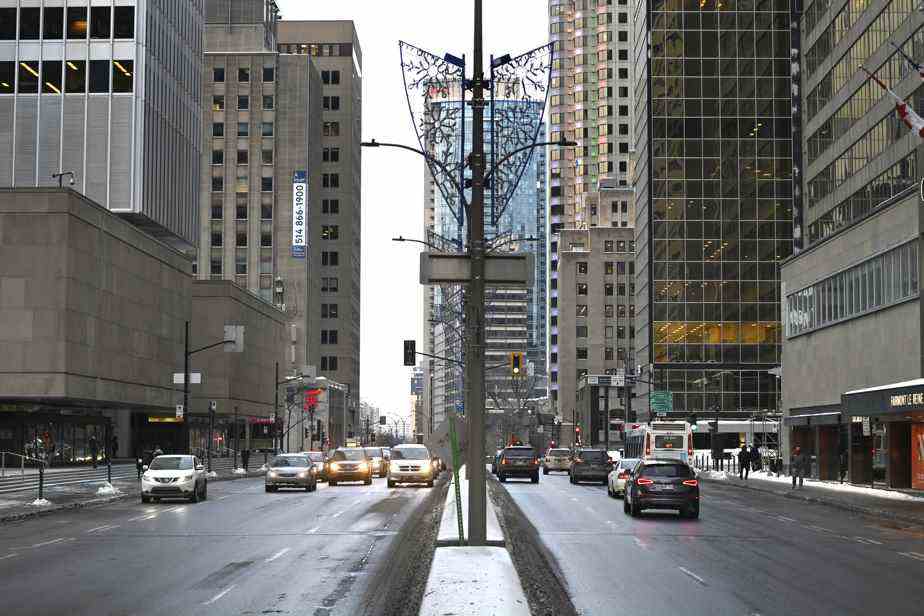Does the future of large cities go through the establishment of carbon-neutral zones, where public and active transportation predominates over car traffic? In the United Kingdom, London believes so and has just extended its “ultra-low emission zone” to the entire metropolitan region. Something to give ideas to those who defend this idea on Quebec soil, especially in Montreal.
“In the end, public health matters more than political expediency. Five million more people will be able to breathe cleaner air. »

PHOTO ALBERTO PEZZALI, ASSOCIATED PRESS
London’s Tower Bridge. The UK government wants to extend its “ultra-low emission zone” to the entire metropolitan area.
These are the words of the Mayor of London, Sadiq Khan, as his administration announced at the end of November that the low greenhouse gas (GHG) emissions zone would be extended to all of Greater London, where 9 live. millions of people. Restricted to central London when it was introduced in 2019, the said area had already been considerably enlarged in 2021.
In the Quebec metropolis, this idea has been gaining ground for a while now. The Plante administration has also clearly expressed its desire to create a “zero emission zone” in the city center by 2030.
“We are currently working on studying the different implementation scenarios. Ultimately, the goal would be to carry out a first pilot project by 2025. We are also collaborating with London and other cities around the world on this measure, ”says the press attaché to the office of the mayor, Marikym Gaudreault.

PHOTO PHILIPPE BOIVIN, LA PRESSE ARCHIVES
Avenue du Mont-Royal was once again pedestrianized last summer.
She recalls that “several parameters” must be considered, “such as the infrastructures already in place in certain sectors, the social equity of the measure and the impact on traders”. “It is a work of great magnitude that is being carried out at the moment. […] We have to choose the sector well and we have to deploy it at the right pace and at the right time to ensure the success of this project,” adds Ms.me Gaudreault.
An opportunity… but also risks
At the National Institute for Scientific Research, Associate Professor Louise Hénault-Ethier, who specializes in adaptation to climate change, is convinced that a zero-emissions zone would do a lot for Montreal.
“We saw during the pandemic how much the pedestrianization of streets, for example, was ultimately very positive for traders. Such an area would structure the city on an even more human scale, while reducing its carbon footprint. It is a path to take without hesitation, ”she decides.
Admittedly, however, admits the professor, the management of change will be “enormous”. “We are talking about a gigantic transition. The idea is not to rush people. It’s going to take a whole communication upstream, with ghost signage or things like that, for example, ”notes Mme Henault-Ethier.
“We must prepare for citizen and commercial appropriation of these future areas, in particular by helping them to facilitate the use of public space. Above all, it must not be seen as an affront to motorists, ”she persists.

PHOTO MARTIN CHAMBERLAND, ARCHIVES LA PRESSE
Patrick Bonin, spokesperson for Greenpeace
At Greenpeace, spokesperson Patrick Bonin also welcomes the desire to do more, but nevertheless warns the Plante administration of potential abuses of a zero emission zone in the city center. “It can become an inconvenience for those who cannot afford a less polluting vehicle, and who would find themselves without an alternative solution to access their place of work. It goes against the principle of the social safety net,” he argues.
His group favors the establishment in Quebec – and first in Montreal – of a “bonus-malus program for the purchase of a new vehicle”. “Thus, those who have the means to buy a new vehicle would face an incentive measure or a surcharge to encourage the purchase of energy-efficient vehicles,” insists Mr. Bonin. “We cannot, overnight, arrive with measures like that. A zero emission zone is good, but we still have to develop the alternatives around it before we get there, ”adds the spokesperson.
Quebec does not intend to intervene
In interview with The Pressthe Minister of the Environment, Benoit Charette, maintains that “municipalities that wish to move forward with this type of regulation have the possibility of doing so”, but that they will have “to seek the membership of their own population.
“The Government of Quebec does not have to intervene and, quite honestly, given the disparity of municipal realities, I could not have a regulation that fixes or imposes a solution. Cities have all the leeway to do so,” said the minister.
The latter also refuses to comment on the merits of a zero emission zone. “I leave it up to elected municipal officials to identify their priorities. If we can accompany them, on the other hand, of course, we will be there to accompany them, ”he offers, however, insisting on the fact that the approximately 1,100 Quebec municipalities have “each very different realities”.
With Jean-Thomas Léveillé, The Press
